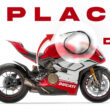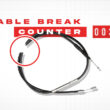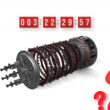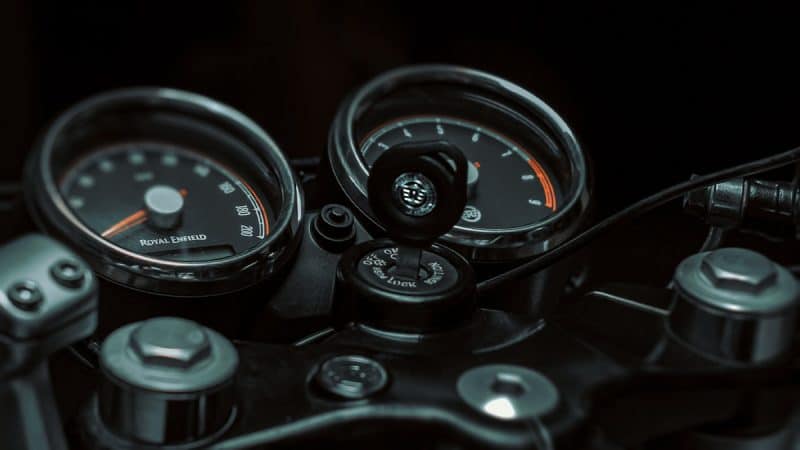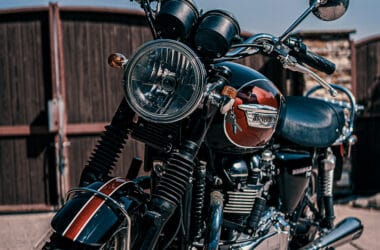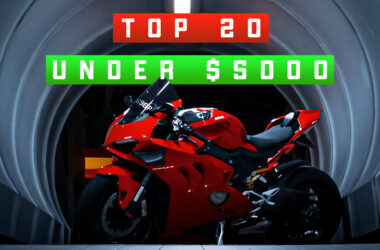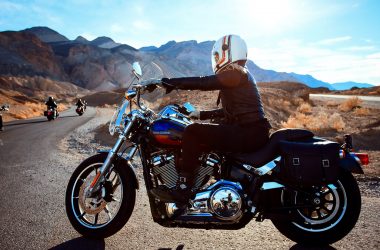Table of Contents Show
The complexity of cold starting fuel-injected motorcycles is way simpler compared to carburetor motorcycles, as you don’t have to worry about choke and petcock ( fuel switch ) position.
As a general rule, for a cold start to be successful components like Injector line, Fuel injector, Fuel pump, Starter relay, Battery, Spark plugs, Starter motor, Ht cables, Motorcycle fuses should be in proper working condition. Motorcycles will be successfully cold-started if the right method is followed.
Fuel-injected systems provide consistent fuel delivery and fuel distribution to the single or multiple cylinders.
It also avoids inconsistent power delivery, which consequently maintains a consistent idle state in the motorcycle once it’s started.
But following the right method or process after cold starting a motorcycle after a long time, or even during cold conditions like early mornings, cold days during winter will help you keep the engine condition intact.
We will also know why cold starts fail and what are the reasons behind them and how to fix them.
Keep in mind that fuel-injected motorcycles offer a way better cold start compared to carburated bikes, but other components/parts failure will inevitably fail cold starting motorcycles regardless of weather conditions or a long absence from riding.
Proper Way To Cold Start Fuel Injected Motorcycles
In fuel-injected motorcycles, engine sensors and ECU does all the work for you.
Here are the following steps to cold start fuel-injected motorcycles if all the components which help to start the motorcycle are in the right working condition.
- First, make sure that your motorcycle is up straight as the engine oil will circulate properly.
- The second step is optional but if you want you can do it. Push the bike for 10 to 15 meters to get gears moving and the oil situated below in the engine as a pre-warm up.
- Then make sure that your bike is in a neutral position.
- Some motorcycles won’t start if the side stand is engaged. Kick up the side stand or disengage it.
- Now insert the key and start the ignition, make sure that the engine cut-off switch (engine kill switch) is disengaged, Wait until the beep sound (engine check sound) cuts. Then press the starter button.
- Some motorcycles require the clutch to be engaged even if it’s in neutral. So if your motorcycle is not starting give this method a try.
- And following these steps will cold start your motorcycle without any failure.
Now we will get to know the failure of parts that can contribute to an unsuccessful cold start and how to fix these problems.
Because fuel-injected motorcycles majority of the time don’t face problems with cold starting and if they do, then the supporting mechanical parts might be the culprit.
But before getting into it. If you want to know the working of the fuel injected system in detail, carry on reading my boys and of course my gals.
Working Of Fuel Injection System In Detail
When you press the starter button electricity passes from the battery to the solenoid.
There are coils inside the solenoid that pushes the plunger forward and once the plunger is pushed, the circuit is closed (currently passes through the closed-circuit).
As a result, the current will flow from the battery to the starter successfully.
Once the circuit is complete, the starter motor starts rotating.
The pinion is attached to the starter motor through a rotor or belt. The shaft and pinion will start to rotate since both of these parts are attached to the starter motor.
The flywheel and crankshaft are connected to each other and the pistons will move inside the cylinders ( combustion chamber ) with the help of connecting rod, which is connected to the crankshaft.
The rotating and reciprocating motion is carried out at the same time in these given parts.
In the process called intake stroke, the air enters the cylinder through the intake valve.
Once the air enters the cylinder it gets compressed, this step is known as compression stroke.
In the process of the power stroke, fuel enters the cylinder ( combustion chamber ) with the help of a fuel injector and the spark is ignited through a sparkplug, which in turn creates combustion.
And finally. In the process of the exhaust stroke, the exhaust valve opens which lets exhaust gases pass through it.
This is how self-starters work in fuel-injected motorcycles once you have cold-started or even the regular start.
Fuel injector controls the amount of fuel/gas and the time it sprays the fuel inside the combustion chamber. Which creates consistent power delivery, low fuel consumption and emission, consistent fuel distribution, lower maintenance, etc are the advantages that fuel-injected system in motorcycles have over carbureted motorcycles.
Reasons Why Motorcycle Won’t Cold start & How to Fix Them
You should know by now that parts in good working condition which help to start the motorcycle will never cause any startup issue which is a cold start and even regular start.
Especially for fuel-injected motorcycles, cold starts are successful majority of the time.
But if you are facing issues or are unable to cold start fuel-injected motorcycles, then bad or busted components/parts are the reason for it.
Here is the list of reasons which won’t let your motorcycle cold start, and the ways to fix this problem.
1. Battery With Multiple Problems
If the battery has problems such as inaccurate multimeter reading, unable to hold a charge for a longer time, cracked/bulge/shrunken casing of the battery, Corroded or broken battery terminals, chemical leak, having to press the starter button longer than needed, or unable to start the motorcycle at all.
These are the multitude of common problems you might have with a motorcycle battery.
How to Fix: If there is visual physical damage to the battery like a chemical leak, damaged casing, broken or corroded terminals, severe discoloration just replace it with the new battery as soon as possible due to obvious safety reasons and inefficiency.
If you don’t see any visual damage on the battery, then just recharge it and see if it holds the charge for a longer time (1-2 days). The battery voltage should range between 12Volts – 13.6Volts. If it doesn’t hold the charge even after recharging it, just buy a new battery and save yourself from a frustrating headache.
2. Starter Relay Current Flow Issue
A starter relay is a remote control switch that regulates the current in the electric circuit. It closes the electric circuit in other words, it lets the electric power flow from the battery to the starter motor in your motorcycle to start.
If the battery & starter motor is in good condition and you are still unable to start the motorcycle by pressing the starter button, or even push-starting. A bad or damaged starter relay due to corrosion might be the problem.
How to Fix: Look for the build-up of carbon deposits or corrosion on the pins of the starter relay. Some people call the pins spade and prongs too.
Clean the build-up formed on the prongs and also use the multimeter the check the readings ( ohm readings may vary from motorcycle to motorcycle ).
And if you don’t get any reading on the multimeter, then buy a new starter relay because it might be damaged.
You should replace the starter relay with a new one if there is severe corrosion on the inside. Use your owner’s manual to find the starter relay on the motorcycle and refer to the service manual if you want to fix it by yourself.
3. Spark Plugs Damage
As the name implies spark plugs produce a spark since a motorcycle needs a spark to ignite in the cylinder ( combustion chamber ) to cause an explosion (to catch fire and start combustion).
Your motorcycle won’t be able to start if there is some kind of significant damage to the spark plug. Sparkplugs can get covered with carbon deposits on them it must be inspected after every 2000 km or whenever you feel there is misfiring or rough idle.
How to Fix: If there is any kind of surface imperfection like thread wear or damage to the ignition tip, extreme electrode wear/breakage or corrosion, insulator breakage, then replace it with a new one as soon as possible.
A normal spark plug that is in good condition should have brownish or grayish color to it.
4. Bad Fuel Pump Assembly
Again as the name implies Fuel pump’s job is to send fuel from the tank to the fuel injector in EFI motorcycles and to the carburetor in the carbureted motorcycle.
How to Fix: Now I advise you guys to refer to the service manual for this one because it differs from motorcycle to motorcycle and also if you don’t have any servicing experience just take it to the nearest garage/service station.
You have to disassemble the fuel pump to clean specific parts and to find out if they are damaged so you can replace them.
Look for the pickup filter also known as fuel pump strainer which is located on the bottom of the fuel pump assembly, if it has a lot of build-up on it and turned its color to dark grayish or black then replace it with a new one.
Next, we have to look for an O-ring situated between the fuel pressure regulator and pump motor.
Replace the O-ring with new ones, if it has cracks or clear damage signs on it.
Now, if you see clear signs of severe corrosion on the fuel pump motor or the whole fuel pump assembly then replace it as soon as possible.
5. Inoperable Starter Motor
A starter motor is a device used to crank (start rotation of the flywheel which is connected to the crankshaft getting the pistons moving and causing combustion with the help of spark ) that starts the engine.
If the starter motor fails to crank your motorcycle won’t be able to start.
How to Fix: Take out the starter motor from your motorcycle to test it. You will need a 12-volt battery that is in good condition, jumper cables, and any tool which can hold the starter motor in place.
Before connecting the cable leads to the battery, connect the other end of the cable’s positive lead to the rubber insolation of the negative lead to prevent sparking.
Connect the jumper cable leads to its according posts ( positive connector to the positive post and negative connector to negative post ).
Once the leads of the other end of the cable are connected to the battery, disconnect the leads of the other end which are connected to each other to prevent the sparking.
Connect the negative lead of the other side of the jumper cable to the starter motor’s body for grounding it.
Now connect the positive lead to the motor’s post, you should expect the starter motor to operate which signifies that it’s in good condition.
If the motor doesn’t start/operate, then replace it with a new one.
6. Faulty Fuel Injector
A fuel injector is an electronically controlled valve that atomizes ( convert into small particle ) fuel into a fine mist so that the fuel can burn easily in the combustion chamber.
And it has an advanced operational function, as we discussed earlier.
How To Fix: There are three types of tests you can do.
1) The Continuity Test
Take a multimeter and attach the brackets to the fuel pump to measure the electric resistance. The output should be zero, which indicates there is no electrical resistance.
2) The Grime Test
Inspect the grime build-up inside the fuel injector and clean it as you don’t want any of that grime inside your combustion chamber. Clean it carb cleaner, contact cleaner spray, and if you want you can use a fuel injector cleaner tool to ease this process.
3) The Functionality Test
In this test, you have to inspect whether the fuel injector opens and closes the valve to inject the fuel.
Disconnect the fuel injector from the engine and try to start the motorcycle, the fuel injector should throw the fuel in an atomized way ( spray the fuel in fine particles ).
7. Bad Injector line
Current travels to the fuel injector through the injector line, with the help of that current the valves in the fuel injector, open and close.
If the connection is not successful, the fuel won’t be able to get into the combustion chamber.
How To Fix: Disconnect the injector line from the fuel injector, and you will be able to see socket holes in which you can insert a small bulb ( parking bulb ) to check whether the bulb glows when you press the starter button.
If the bulb glows it denotes that the current flows through the injector line successfully.
If it doesn’t you have to replace it. You can also inspect the current flow with the help of a multimeter too.
8. Faulty HT Cables (Spark Plug Wire/Cable)
Current travels to spark plugs through HT cables, over time the wire might get heated and may not function properly.
How to Fix: Check out for visible crack on the wire, corrosion on the boot area of the spark plug wire.
It’s in your best interest to replace it with the new one to save all the hassle and headache which can come if you ignore it.
Why It’s Hard To Start A Motorcycle At Low Temperature ( Cold Temperature, Early Morning )
In cold conditions the engine oil gets thick, and it is difficult to circulate thick oil throughout the engine.
Most motorcycles use lead-acid batteries and lead-acid battery performance is low in cold temperature as the chemical reactions inside the battery are at a lower rate.
As lead-acid battery discharge is also more in cold weather they reach a point where they can’t produce enough current to crank the engine.
Tips For Fuel Injected Motorcycle For A Cold Start
- Use engine oil suitable for lower temperatures (5w-40 or 0w-30).
- Let the engine idle for a minute before riding.
- Use petrol with higher octane levels.
- Use a lithium-ion (dry cell battery) battery in cold conditions, as its performance is slightly better than a lead-acid battery in cold conditions.
Does Cold Starting Fuel-Injected Motorcycle Damage The Engine?
No, a cold start doesn’t damage the motorcycle if done properly, care must be taken that you don’t rev it as soon as you start your motorcycle.
Let your engine idle for 30 sec to a minute. Then ride it for some time, don’t keep high rpm until you warm up your engine.
Revving the engine hard when it is cold will damage your engine, as the inner components are not warmed up and lubricated to an acceptable extent.
Let’s say if you rev your motorcycle to the red line tremendous heat is generated and cold engine components experience tremendous wear and tear as engine components are made of alloys that include iron such as cast iron, structural steel, stainless steel, cast aluminum, and forged aluminum.
Since all the components shrink slightly and won’t perform well when they are cold.
Another major thing is engine won’t be lubricated enough to perform in its optimum form when it is cold it needs some time to circulate throughout the engine and lubricate it completely.
Precautions You Need To Take After Cold Starting The Motorcycle
There are some precautions that one must take after a cold start and how to avoid the engine getting cold to a certain extent.
- Must not rev engine immediately after starting the motorcycle.
- Must not do high speeds until the engine is hot enough.
- Keep the bike in the insulated garage and use an insulated bike cover to avoid this scenario in the first place.
- Close the bike exhaust with exhaust caps when placing it in a garage during cold weather/low temperature.
- Let the beep sound ( Engine check sound ) cut off completely then press the electric start switch.
Conclusion
Fuel-injected motorcycles majority of the time don’t face problems with cold starting but particular parts which helps motorcycle to start should be in proper working condition.
If not, then forget about cold start you won’t even have a successful regular start.
Sucks doesn’t it!
But now you know how to fix it.

